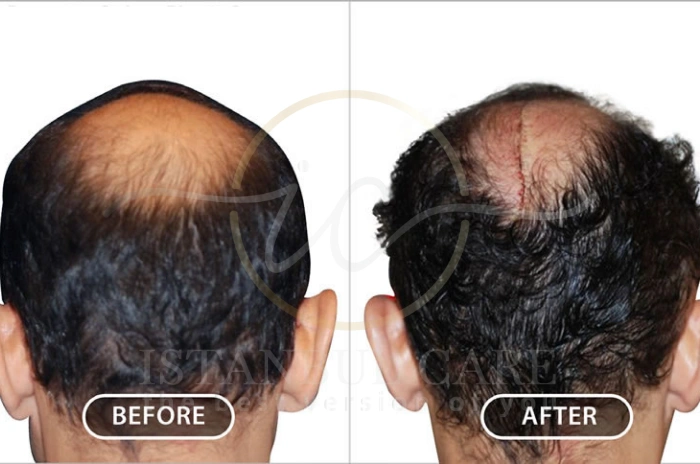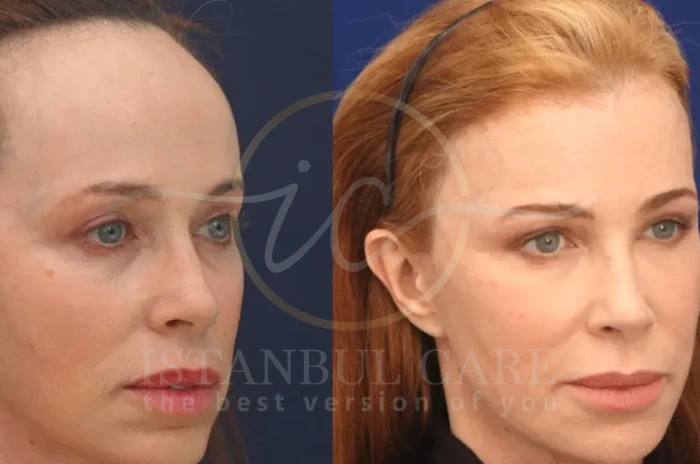Hair loss affects millions of people worldwide, leading many to seek effective restoration solutions. Among various surgical options, scalp reduction surgery stands out as a direct approach to treating baldness by physically removing bald areas. This procedure offers an alternative to traditional hair transplantation methods for specific types of hair loss patterns.
Understanding how scalp reduction for hair restoration works helps patients make informed decisions about their treatment options. The technique involves surgically removing sections of bald scalp and stretching the remaining hair-bearing skin to cover the area. While not suitable for everyone, this method can provide significant improvements for carefully selected candidates.
Modern surgical hair restoration techniques have evolved considerably, offering patients multiple approaches to address their hair loss concerns. Scalp reduction surgery represents one such option that directly tackles the problem by eliminating bald areas rather than relocating hair follicles from other regions.

What Is Scalp Reduction Surgery for Hair Restoration and How It Works
Scalp reduction surgery is a surgical procedure that removes areas of bald scalp and stretches the surrounding hair-bearing skin to cover the exposed area. This technique directly addresses hair loss by eliminating the bald region rather than transplanting hair follicles from donor areas. The procedure works by taking advantage of the scalp’s natural elasticity and ability to stretch.
The surgery begins with careful planning to determine the amount of scalp that can be safely removed. Surgeons assess scalp laxity to ensure adequate skin elasticity for proper closure without excessive tension. The procedure typically takes two to four hours, depending on the size of the area being treated and the specific technique employed.
During the operation, the surgeon makes precise incisions around the bald area using various patterns such as Y pattern incision, star pattern incision, or lateral crescent incision. The choice of incision pattern depends on the location and shape of the bald area being addressed. After removing the bald scalp tissue, the surgeon carefully brings the hair-bearing edges together and sutures them in layers.
Alopecia reduction, another term for this procedure, requires meticulous surgical technique to minimize scarring and ensure proper healing. The surgeon must consider factors such as blood supply, scalp mobility, and future hair loss patterns when planning the procedure. Proper patient selection and surgical execution are crucial for achieving satisfactory results.
How Scalp Reduction Surgery Treats Hair Loss
Scalp reduction surgery treats hair loss by physically removing the affected bald areas and utilizing the surrounding healthy, hair-bearing scalp to cover the region. This approach differs significantly from hair transplantation methods that relocate follicles from donor sites. The procedure is particularly effective for treating crown baldness surgery cases where the bald area is well-defined and surrounded by stable hair growth.
The treatment works best for patients with androgenetic alopecia who have developed distinct bald patches on the crown or vertex of the scalp. The surgery takes advantage of the scalp’s natural elasticity to stretch the hair-bearing skin over the previously bald area. This immediate coverage provides instant results, unlike transplantation procedures that require months for hair growth.
Scalp reduction for hair restoration is most effective when combined with other techniques. Many surgeons recommend using this procedure alongside hair transplantation to optimize coverage and density. The reduction surgery can eliminate large bald areas, while transplantation can refine the hairline and add density to specific regions.
The procedure addresses alopecia treatment by providing permanent removal of bald areas. Once the scalp tissue is removed and the incision heals, the treated area will maintain hair coverage as long as the surrounding hair remains stable. However, patients must understand that ongoing hair loss in untreated areas may require additional procedures in the future.
Benefits of Scalp Reduction for Hair Restoration
Scalp reduction surgery offers several distinct advantages for appropriate candidates seeking hair restoration. The most significant benefit is immediate coverage of bald areas, eliminating the waiting period associated with hair transplant procedures. Patients see instant results once the surgical site heals, typically within a few weeks.
The procedure provides excellent coverage for large bald areas that might require multiple hair transplant sessions. Scalp reduction for hair restoration can eliminate substantial bald regions in a single surgery, making it cost-effective for patients with extensive crown baldness. This efficiency makes it an attractive option for those seeking comprehensive coverage quickly.
Another advantage is the preservation of donor hair for future procedures. Since the surgery removes bald scalp rather than harvesting hair follicles, it maintains the donor area for potential future transplantation needs. This preservation is particularly valuable for younger patients who may experience continued hair loss over time.
The results from surgical hair restoration through scalp reduction tend to be very natural-looking when performed by experienced surgeons. The hair growth pattern and direction remain unchanged since the existing hair-bearing scalp is simply repositioned. This natural appearance often surpasses results from some transplantation techniques, especially in the crown area.
Scalp reduction surgery also offers long-term stability. Once the procedure is completed and healed, the covered area typically maintains its hair coverage permanently. This permanence provides peace of mind for patients concerned about ongoing hair loss in treated areas.

Who Is a Good Candidate for Scalp Reduction Surgery
Ideal candidates for scalp reduction surgery must meet specific criteria to ensure successful outcomes. The most important factor is adequate scalp laxity, which allows the surgeon to stretch the skin without excessive tension. Patients with tight scalps may not be suitable candidates, as forced closure can lead to complications and poor healing.
Age plays a crucial role in candidate selection for alopecia reduction. Surgeons typically prefer patients over 30 years old whose hair loss pattern has stabilized. Younger patients may experience continued hair loss that could compromise the surgical results or require additional procedures. Stable hair loss patterns ensure the longevity of the surgical outcome.
The location and size of the bald area significantly influence candidacy for scalp reduction for hair restoration. The procedure works best for crown baldness with well-defined borders surrounded by stable hair growth. Patients with diffuse thinning or extensive frontal hairline recession may not be ideal candidates for this technique alone.
Psychological readiness is another important consideration. Candidate for alopecia reduction should understand the permanent nature of the surgery and the potential for visible scarring. They should also be prepared for the recovery period and any temporary changes in appearance during healing.
Comparing Scalp Reduction to Other Hair Restoration Methods
When comparing scalp reduction surgery to hair transplant surgery, several key differences emerge. Hair transplantation involves moving individual follicles from donor areas to bald regions, while scalp reduction physically removes the bald area. Transplantation requires a longer timeline for results, as transplanted hair must grow over 6-12 months, whereas reduction provides immediate coverage.
| Comparison Factor | Scalp Reduction Surgery | Hair Transplant Surgery |
|---|---|---|
| Procedure Type | Physical removal of bald scalp | Relocation of hair follicles |
| Results Timeline | Immediate coverage | 6-12 months for full results |
| Best For | Large crown bald areas | Hairline, temples, diffuse thinning |
| Recovery Time | 2-3 weeks intensive recovery | 1-2 weeks moderate recovery |
| Donor Hair Usage | Preserves donor hair | Uses donor hair follicles |
| Number of Sessions | Usually single procedure | Often multiple sessions needed |
| Scarring Risk | Linear scar at incision site | Minimal scarring (FUE) |
| Cost Range | $3,000-$8,000 | $4,000-$15,000+ |
| Permanence | Permanent for treated area | Long-lasting but may thin |
| Revision Rate | 20-30% need revisions | 10-15% need touch-ups |
Hair restoration surgery through transplantation offers more versatility in treating various hair loss patterns. It can address hairline recession, temple baldness, and diffuse thinning more effectively than reduction surgery. However, transplantation may require multiple sessions to achieve adequate density, especially for large areas.
Cost considerations vary between these hair restoration methods. While scalp reduction surgery may have lower upfront costs for treating large areas, the total expense depends on individual needs and whether additional procedures are required. Transplantation costs accumulate with each session but may provide more comprehensive long-term solutions.
The recovery process differs significantly between methods. Scalp reduction for hair restoration involves a more intensive immediate recovery period with sutures and potential discomfort. Hair transplantation typically involves less dramatic initial recovery but requires careful handling of the transplanted area for several weeks.
Risks and Complications of Scalp Reduction Surgery
Scalp reduction surgery carries inherent risks that patients must understand before proceeding. The most common complication is scarring at suture lines, which can be visible if not properly planned or if healing is compromised. Wide or raised scars may require revision surgery or camouflage with additional hair transplantation.
Slot deformity represents a specific complication where the scalp appears to have an unnatural linear depression along the incision line. This occurs when the scalp is closed under too much tension or when the incision pattern doesn’t follow natural scalp contours. Slot deformity can be challenging to correct and may require multiple revision procedures.
Scalp reduction complications can include infection, bleeding, and poor wound healing. Patients with compromised healing ability, such as smokers or those with certain medical conditions, face higher risks. Proper pre-operative evaluation and post-operative care significantly reduce these risks.
The risk of needing revision surgery is significant with alopecia reduction. Studies suggest that 20-30% of patients require some form of revision procedure, whether for scar improvement, slot deformity correction, or additional reduction. Patients should understand this possibility when considering the procedure.
Recovery and Results After Scalp Reduction
Recovery from scalp reduction surgery begins immediately after the procedure with careful wound management. Patients typically experience swelling and discomfort for the first few days, which can be managed with prescribed medications and cold compresses. The surgical site requires gentle cleansing and proper bandaging to prevent infection and promote optimal healing.
Sutures or staples are usually removed within 10-14 days after scalp reduction for hair restoration. During this period, patients must avoid strenuous activities that could increase blood pressure or tension on the incision site. Most people can return to desk work within a week, but physical activities should be gradually resumed over several weeks.
The initial results of surgical hair restoration through scalp reduction are visible once swelling subsides and the incision heals. However, the final aesthetic outcome may not be apparent for several months as the scalp settles and any temporary hair loss around the incision site recovers. Patience is essential during this healing process.
Hair restoration results from scalp reduction can be quite dramatic, especially for patients with large crown bald areas. The immediate coverage provides significant improvement in appearance and confidence. However, patients should understand that the hair density in the treated area reflects the original density of the relocated scalp tissue.
Speak with our expert Hair Transplantation specialists

Speak with our expert Hair Transplantation specialists
We’re ready to answer your questions
FAQs for Scalp Reduction Surgery for Hair Restoration How It Works
Scalp reduction surgery treats hair loss by surgically removing the bald scalp area and stretching the surrounding hair-bearing skin to cover the previously bald region, providing immediate coverage without waiting for hair growth.
An ideal candidate for alopecia reduction is someone over 30 with stabilized hair loss, adequate scalp laxity, good overall health, and realistic expectations about the procedure’s outcomes and potential limitations.
The main risks of scalp reduction surgery include visible scarring, slot deformity, numbness, infection, poor healing, shock hair loss, and the potential need for revision surgery in 20-30% of cases.
Scalp reduction surgery offers immediate coverage for large crown areas and preserves donor hair, while hair transplant surgery provides more versatility for different hair loss patterns and typically produces more natural-looking results with proper technique.

